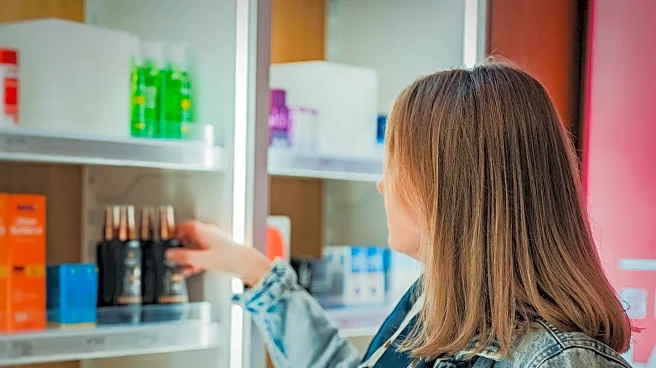What's Happening?
InspiroGene by McKesson has released its second annual 2025 Cell and Gene Therapy Report, highlighting the increasing adoption of cell and gene therapies (CGTs) and the persistent challenges they face. The report, based on research with physicians and payers, reveals that while oncologists' familiarity with CGTs has grown, significant barriers remain, including perceptions of these therapies as experimental and risky. Payers acknowledge the safety and effectiveness of CGTs but cite cost and durability as major hurdles to reimbursement. The report also notes the slow expansion of CGT treatment centers into community settings and the rapid growth of the CGT pipeline, particularly in oncology.
Why It's Important?
The report underscores the transformative potential of cell and gene therapies in modern medicine, offering promising treatments for diseases like diabetes and lupus. However, the challenges highlighted—such as high costs and limited long-term data—pose significant obstacles to widespread adoption. Addressing these issues is crucial for ensuring that patients can access these groundbreaking therapies. The insights from the report can guide stakeholders in developing strategies to overcome these barriers, potentially leading to more effective payment models and increased availability of CGTs in community settings.
What's Next?
InspiroGene and other stakeholders in the CGT field may focus on developing innovative payment models to address cost concerns and improve reimbursement processes. Efforts to expand CGT treatment centers into community settings are likely to continue, aiming to make these therapies more accessible to patients. Additionally, ongoing research and development in the CGT pipeline could lead to new treatments and applications, further driving the growth of this sector. Collaboration among manufacturers, payers, and providers will be essential to realize the full potential of CGTs.
Beyond the Headlines
The report highlights the ethical and societal implications of CGTs, particularly the need for equitable access to these advanced therapies. As CGTs become more prevalent, ensuring that all patients, regardless of socioeconomic status, can benefit from these treatments is a critical consideration. The slow expansion into community settings also raises questions about healthcare disparities and the need for targeted efforts to bridge these gaps.










